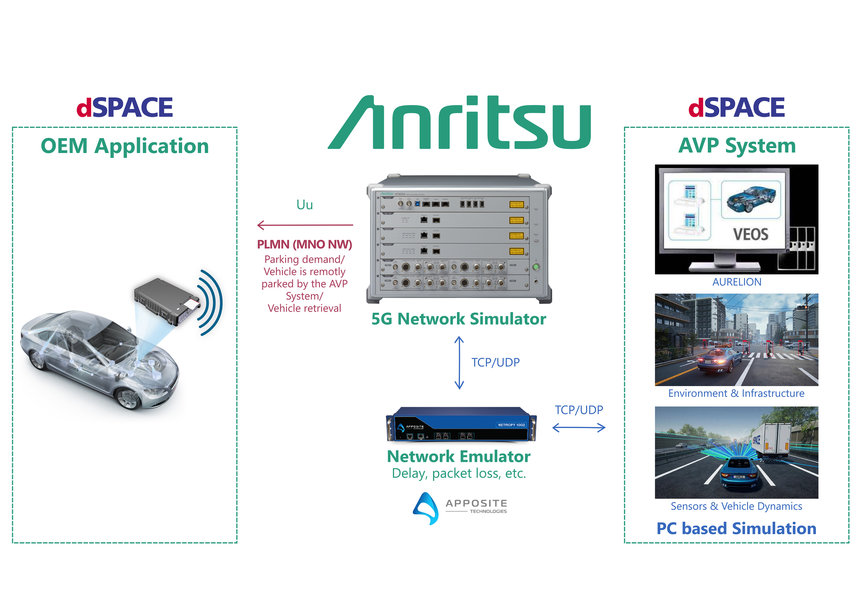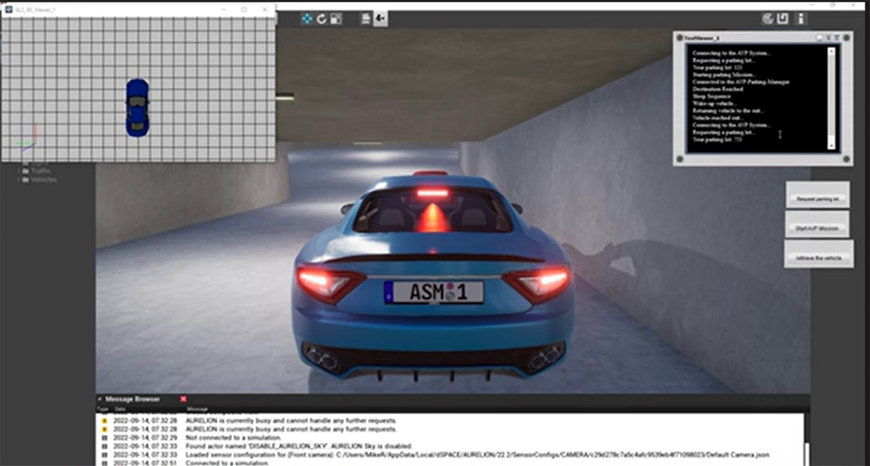electronics-journal.com
30
'22
Written on Modified on
Anritsu, dSPACE, and Apposite Technologies Collaborate to Realize an AVP Test Environment for Autonomous Driving Use Cases
Anritsu Corporation has developed a test and simulation environment for Automated Valet Parking (AVP) in collaboration with dSPACE GmbH (dSPACE) and Apposite Technologies LLC (Apposite).

A demonstration exhibition was held as part of the 5GAA*1 Member Symposium event in Malaga, Spain on October 20th.
Valet parking is a service in which a professional parking attendant parks drivers’ cars at large-scale parking facilities and commercial facilities, mainly in Europe and the United States. AVP enables this parking to be done automatically, without any driver in the vehicle. AVP Technical Report Version 1.0 was released by 5GAA in June 2022, and a wireless communication (Type-2) operation scheme linked with parking garage infrastructure and users’ smartphones was proposed.
AVP is being developed as an autonomous driving use case which can be deployed in the short term. AVP Type-1 autonomous driving vehicles require expensive high-performance computing and sensing, while AVP Type-2 communication-cooperative vehicles do not require such installations, reducing vehicle costs and making implementation easier.
Since AVP Type-2 requires highly reliable end-to-end communications, a test system needs to evaluate QoS management and impairment effects in the IP layer. The wireless connectivity environment also needs to be evaluated. The test solution set up a digital twin environment incorporating both virtual and real devices. This allows the system tests and certification required to improve the reliability of AVP Type-2 to be started before the actual devices are available.

Sample simulation image A virtual vehicle that has received VMC (Vehicle Motion Control) commands across the 5G network is automatically driving in a parking lot according to control instructions sent by the parking garage.
Automotive OEMs, Tier 1 suppliers, and mobile network operators have shown great interest in the demonstration, and we will continue to develop this simulation environment and contribute to the realization of AVP.
Vehicle motion control commands (VMC) generated by the AVP System are transmitted to the OEM Application, which displays the state of vehicle control, via 5G communication using Anritsu's 5G base station simulator.
VMC commands pass through the Apposite Network emulator on the way to OEM Application. IP data delay and data packet loss are added by the emulator, and so vehicle control becomes unstable due to its influence in the OEM Application. AVP developers design control systems and networks to keep vehicle control stable.
Product Outline
The base station simulator Radio communication test station MT8000A is a test platform that provides network simulation for 5G radio access technology (RAT*6) and provides a development evaluation and certification test environment for automotive use cases such as Telematics, Infotainment, and V2X.
Product Outline
1 5GAA
5G Automotive Association
As a member of the 5G Automotive Association (5GAA), an international organization, Anritsu participates in activities to develop and promote standardized protocols for automobiles using 5G communications from the standpoint of communication test and measurement.
Major companies in the automotive and telecommunications industries around the world participate in 5GAA, and in cooperation with standardization organizations such as ETSI, 3GPP, SAE, etc., they develop the standardization necessary to implement V2X communication. It focuses on cellular-based communications known as C-V2X. Anritsu will continue to support the evolving communication-cooperative AD/ADAS development.
www.anritsu.com

